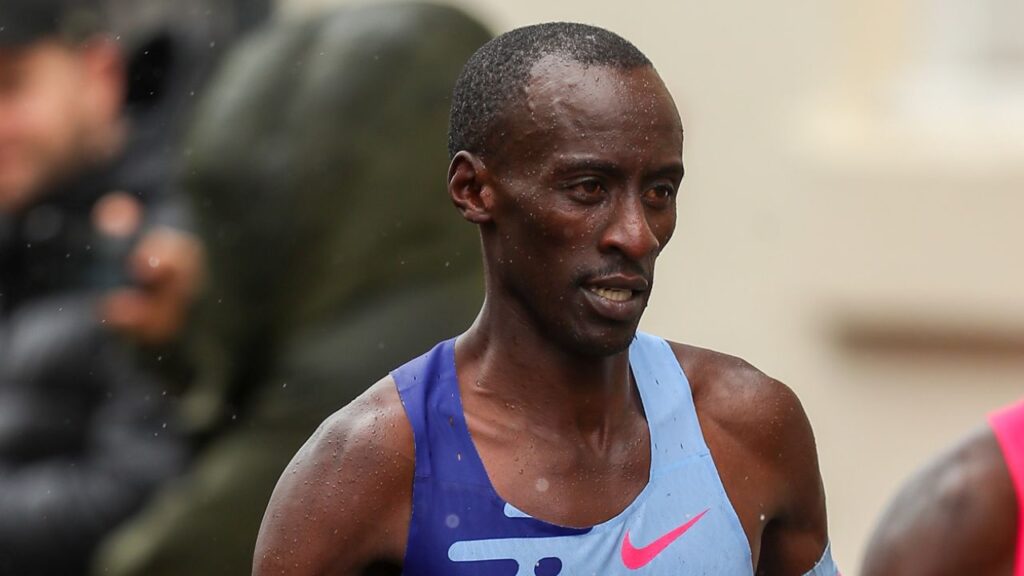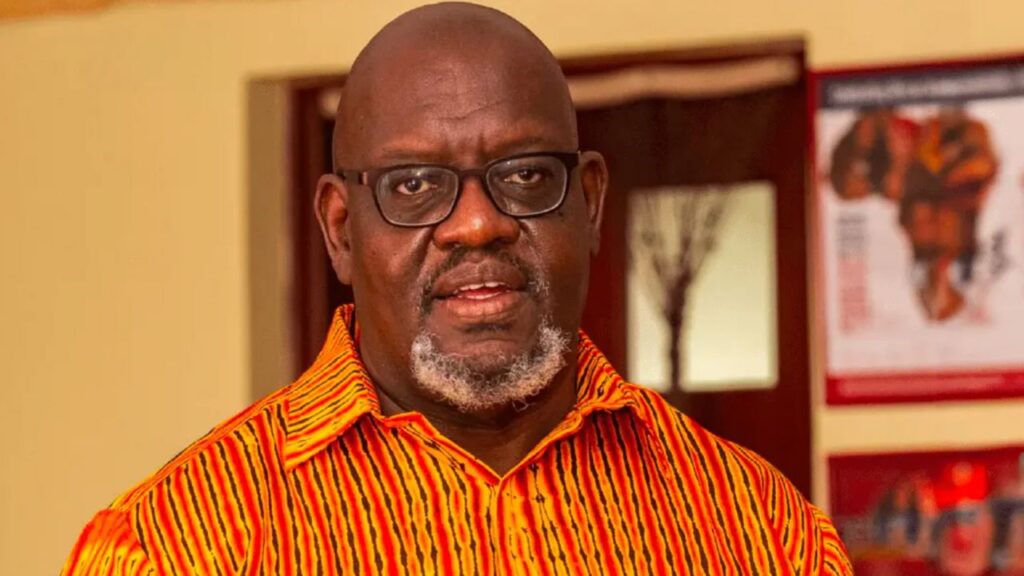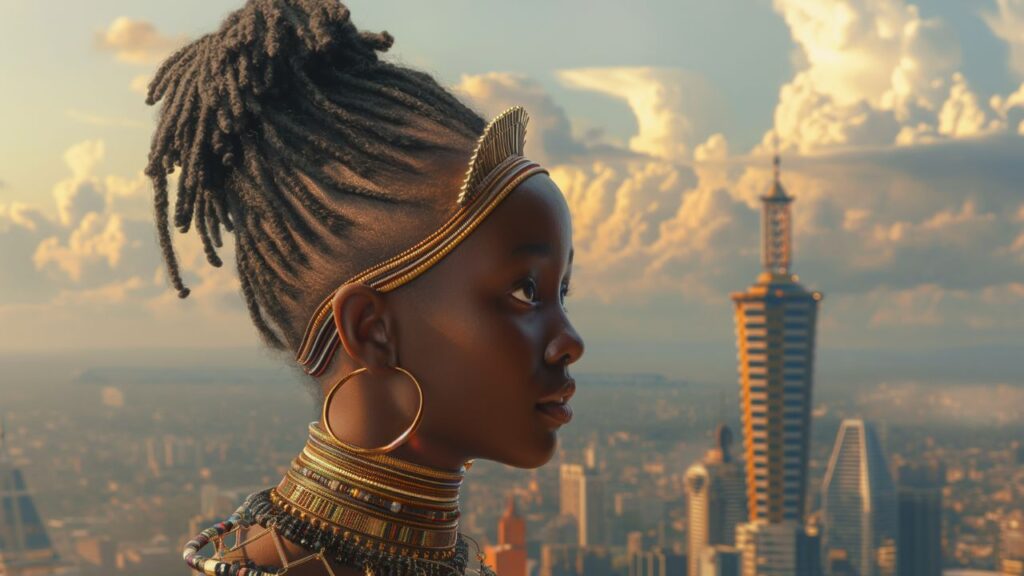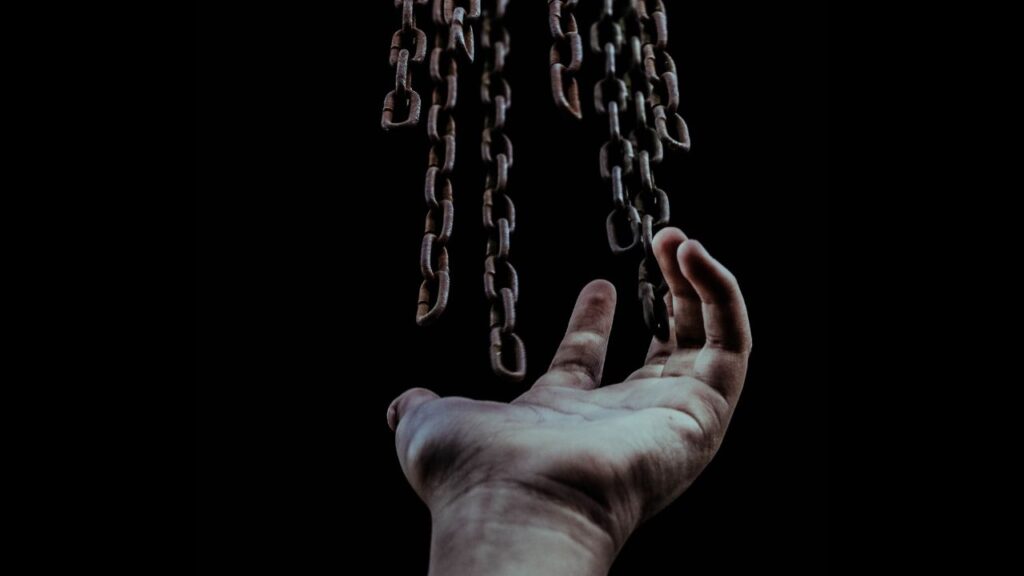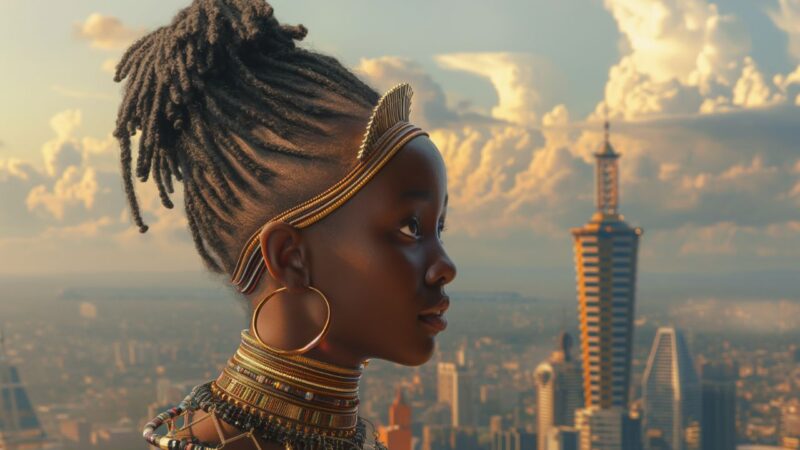Lethal violence is fact in Mathare. On the day I first visit the community, tweets hashtagged #CopRashidCorruptDeals appear on my Twitter feed. I already knew of Rashid, having watched the BBC documentary about him and his team. I follow the hashtag and find this tweet from a local journalist: “Rashid has wiped all thugs around Eastleigh, Mathare and Huruma. To us residents he is a nice guy.” The journalist in question has twenty-three thousand followers.
I’ve only been in Mathare a matter of minutes when an invisible hand runs gently over the dome of my head. It’s a familiar, yet strange, feeling. I quickly realise that this is because it is neither my own hand, nor that of Inés, my wife. The hand actually belongs to a man standing behind me. Feeling vulnerable, I move away quickly, saying “COVID” in justification for my abruptness. “19”, he responds, completing my words. It’s a funny moment and I relax.
My new acquaintance is one of the many addicts who share a rubbish dump with a large number of highly energetic and boisterous children. The children have transformed a corner of the tip into a gymnasium. The gym includes a climbing frame/assault course (improvised from an abandoned wooden structure) and a springboard — a large black tyre — from which the tiny gymnasts gracefully launch themselves. The kids are well organised. They stand in a nice queue. There are fast ones, skilful ones and learners. After a quick sprint they hit the tyre with both feet. It projects them and they spin defiantly, airborne above the garbage for a split second, before landing on the piece of carpet that serves as a crash mat. Fans gathered to watch the spectacle make approving sounds for the best leaps and twists. The contrast between the shiny-eyed bounce of the children and the glazed stagger of the addicts is stark and saddening.
I’m in Mathare to visit members of the Mathare Empire collective. The enterprising young members of this group have recently occupied and redecorated an abandoned building at one end of the trash pile. Their porch provides front-row seats from which to watch the young athletes practice their somersaults. It is fittingly decorated with a painting of a child with huge boxing gloves and a stop-corona mask. This is one of several large and handsome murals depicting faces that gaze patiently over the dump.
Despite the distracting vivacity of the young gymnasts, the garbage heap is treacherous. It almost swallowed up a little girl recently. The piles and layers of trash hide pools of rainwater, transforming the junk into something akin to a deadly swamp. The girl, running to greet her father, sunk into one such concealed crevice and began to go under. Quick-witted bystanders saved the day, plucking her out before she disappeared.
The purpose of my visit is to present and discuss projects in Rio de Janeiro, where I lived until recently. In Rio I first worked for Amnesty International, documenting and campaigning against human rights violations in some of the city’s 1000+ world-famous and, sadly, ultra-violent favelas. I later became involved in grassroots cultural and youth initiatives aiming to empower and raise the self-esteem of Rio’s young people and communities. This work is documented in a book titled Culture is Our Weapon and included a project by JR — a TED prize-winning French artist — called Women are Heroes. Most recently, in 2019, I helped to organise the construction of a skatepark in Maré, a neighbourhood made up of sixteen favelas originally constructed on swampland.
We have lots to talk about. While sharing ideas and stories with the group, I discover they have recently taken part in a video call with Raull Santiago, a prominent human rights defender from the Alemão (German) complex, one of Rio’s most violence-hit communities. The issues faced by the residents of Mathare and Alemão are similar yet different. Both are very big, but Mathare is much more densely populated and much poorer. While both places suffer violence, Alemão is a war zone. Both are built in a valley and are full of human endeavour and misfortune in equal measure. In both places young men, specifically, are at high risk of coming to a violent end.
We go for a walkabout. My guides show me how and where they have staked out green spaces, planted trees and painted structures with bright murals, (part of their work for the Mathare Green Movement). These actions bring levity and freshness into the often airless and monochromatic environment. I’m struck by their colourful imaginings of other universes on the walls of public toilets. Just one of these strong-smelling units can cater for the needs of five thousand Mathare residents. I also learn that the toilets are centres of socialisation — children’s friendship networks in Mathare are built around who shares the facility nearest your house. Kids playing in front of several of the vibrantly decorated loos that we visit demonstrate this. The pictures on the walls imagine other possibilities — outer space or lush tropical forests — while others remind users of their current terrestrial responsibilities: don’t forget your mask!
I suffer from sensory overload walking around Mathare. As in Rio, there are myriad sights, sounds and smells to take in all at once. Because of COVID-19, school is out when I visit. Children are everywhere. The community is spread across a gentle valley, not the steep escarpments of many favelas in Rio. Corrugated iron shacks — so close together that visually they form a vast iron sheet of rusted red, grey and brown — cover the slopes. The poverty is grinding. Narrow paths zigzag between lean-tos and rank smelling drains. Most of the shacks are low and many look as if they might fall down should you push them.
In contrast, residents are mostly well dressed and clean. Commerce, licit and illicit, crowds the pathways and thoroughfares. Cheap, ripe fruit and vegetables abound. I taste sweet pineapple and see watermelon, avocados, tomatoes, garlic, peppers and onions. Vendors hawk pastries, eggs and sausages. Cooks stir delicious smelling dishes over wood fires. In Rio, obesity in low-income communities is a serious issue. Here I’m impressed — most people in Mathare look healthy and strong.
We pass a wealth of legal, illegal, social, spiritual and commercial activities — khat stalls, illicit hooch making stills, drug dealing areas, NGOs, schools, churches, mosques and markets. Public soap dispensers and water for handwashing remind us that COVID-19 is ever-present, even though social distancing is impossible. Besides the sale of food there is plentiful commerce—mobile phone businesses, hardware shops, beauty salons, charcoal vendors, boda boda riders and stalls selling new and second-hand clothes. Authentic second-hand garments are considered infinitely more stylish than bogus new ones, I am informed. Fake clothes in Mathare = a serious fashion crime! It’s the same in Rio, where favela residents take pride in their appearance. However, Brazil does not have such an abundance of second-hand imports. And so in Rio, the emphasis is more often on an item’s newness, not necessarily its authenticity.
Yet despite the trading, hustle and bustle and a resilient-looking population, the overwhelming sensation I have in Mathare is that of risky living. I can only try and imagine the heat inside the shanties in high summer or what happens during the rains, when sewers flood and the metal shanties become dangerous because of electric shocks from exposed wiring. But although Mathare is economically poorer and less developed than similar communities in Rio, I do not feel suffocated by the inescapable threat of violence. In Rio’s battle-scarred favelas, gun-toting teenagers patrol the alleyways. Bullet holes in the masonry all around inform you that the weapons are not just for show. Violence is real and present and you are constantly reminded of this.
When I ask my guides about the tweet concerning Rashid they tell a very different story from that of the journalist who described him as “hero”. For young men in Mathare, Rashid is the grim reaper in human form and something of a shape shifter, known for his ability to camouflage himself and merge with the surroundings. He carries pictures of targets on his phone. Businesses pay him to go after miscreants. However, innocents, friends, associates or just the unlucky often end up dead.
The guys I am with are mostly in their early twenties. Statistically, they are the group most at risk from police violence. The presence of killer cops does not make them safer or protect them from crime. Local thieves, they tell me, refer to after dark as “office hours” and can even rob someone they know because those are “the rules and young thieves will take everything you have—even your girlfriend. They take drugs that make them fearless and immune to pain.” These include pills called “cosmos”, sold by local dealers. Cosmos pills come in different colours according to strength and stain the user’s lips. The tablets are apparently prescription medicine for mental illness, stolen from the public health system.
Law-abiding young men in Mathare live between a rock and a very hard place. When they talk about problems, conversation revolves around work and danger. While dignified employment is scarce, even for the well-educated, the threat of violence is permanent. Rashid — seen as something of an executioner-in-chief — exercises the power of life and death through his actions and their multiplication in the public imagination.
The youth in the favelas of Rio favela suffer from precisely the same issue. Police killings (extrajudicial executions by any other name) in the city are among the highest — if not the highest — in the world. The slaughter takes place in the context of a so-called drug war whereby society overlooks illegal police action in return for perceived security. Young men in favelas are also at risk from gangs inside their communities who also kill without pity. Fierce and chaotic gun battles between police and lawbreakers very often leave behind victims of stray bullets. By the end of 2019, Rio’s police force had shot and killed 1,810 alleged suspects in supposed confrontations, the highest annual number on record and almost twice the 1,003 victims of police violence for the entire US that year. In 2020 lethal police violence and operations in favelas in Rio continue at full steam; they did not abate even under COVID-19 lockdown.
As in Nairobi, where some locals describe Rashid as a hero, the Brazilian media and public have long tolerated and encouraged extrajudicial executions as purported crime fighting. Typical practice is to execute a victim in a fake shoot-out. In just a few hours in February 2019, during a single operation in a favela, Rio police shot and killed 13 suspects. These included nine young men in a house, who, according to witnesses, were trying to give themselves up. However, sometimes they don’t even try to pretend — as was the case in a Rio suburb in 2005, when off-duty police in cars shot and killed 29 civilians in a single evening.
Widespread public consent for criminal state violence in Brazil is encapsulated in the popular saying “a good thug is a dead thug”, first adopted by police death squads operating in the 1960s at the beginning of the country’s 20-year military dictatorship. In 2018, future president Bolsonaro took the dictum to extremes by pledging to unleash waves of violence across the country when elected, saying, “if a policeman kills 10, 15 or 20 with 30 bullets each he must be decorated, not charged”. Other politicians followed suit, campaigning on explicit platforms of lethal violence. Despite the extremely high numbers of police killings, individual cases of which are rarely scrutinised, Bolsonaro committed to the introduction of new legal mechanisms to further protect killer police from investigation.
In Brazil, killer cops, drug traffickers and death squads have long terrorised low-income communities across the nation. In rural areas, local police and hired gunmen provide such a service. In cities and their peripheries, the absence of the state and lack of regulation in poor neighbourhoods and favelas offer a wealth of illicit opportunity. Whoever provides security in these areas can step in to control the local economy, provision of services and crucially, access to the electorate. Paramilitary groups, known in Rio de Janeiro as militia, have lately appropriated this model — a fusion of traditional politics, organised crime and territorial control. Usually linked to police, prison and fire services, today the militia operate in more than half of the city’s neighbourhoods.
Cameroonian political scientist Achille Mbembe has identified this process — the political management of vulnerable populations through their exposure to death — as “necropolitics”. Necropolitics clearly regulates life in Mathare as much as it governs Rio’s favelas. Police like Rashid are not there to fight crime. They defend a status quo.
When I am about to leave Mathare after my first visit, I have an indication of what the maintenance of this status quo entails. Two very burly policemen brandishing enormous sticks barge their way along the street and disappear behind some huts. People double their speed to get far away from them. Doors close and the street empties. Twilight falls. A palpable tension replaces the relaxed late Saturday afternoon coming and going. Onlookers inform me that the police are there to extort payment from vendors who sell glue and “jet fuel” — ultra-cheap ethanol for inhaling — to the crushed adults who converge on the garbage dump.
***
Thankfully, the next time I visit, there is a much more pleasant atmosphere in this corner of Mathare. The area outside the bungalow, as the Mathare Empire members call their HQ, is swept clean. Local and guest artists perform on a brightly coloured stage, made from pallets painted purple, red, yellow and green, to a hyped crowd who occupy the kids’ gymnasium at the edge of the dump. They talk, sing and rap about police violence and issues of the day, like COVID-19. But the event is not a political lecture and nor is it gloomy. The group had spontaneously decided that what was originally going to be a concert would instead be the first ever “Mathare Futurism Day” – a gathering of local painters, artists and musicians to celebrate community, address current issues and reimagine Mathare. “Moments like this”, Wyban Mwangi says, “remind people about the beauty of self-dignity and the constant need to struggle for a better, healthier and safer place to live”. In communities governed by necropolitics, such resistance provides vital hope, freedom and breathing space.


